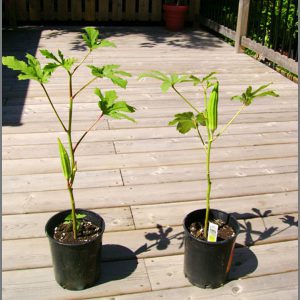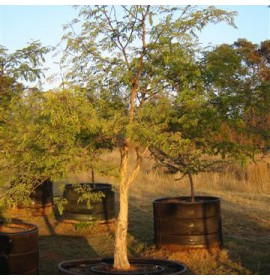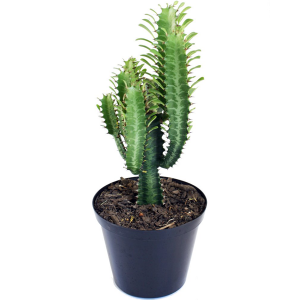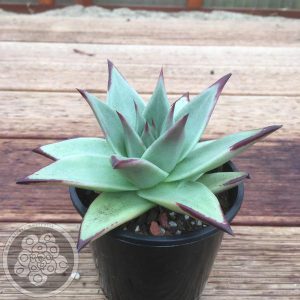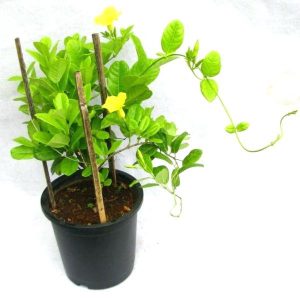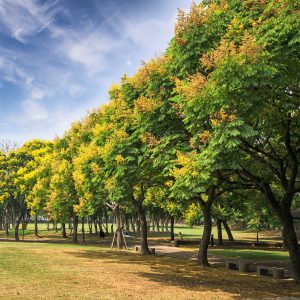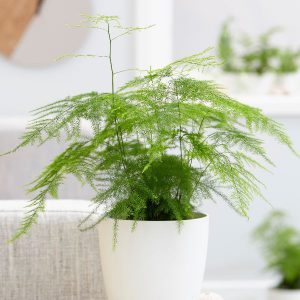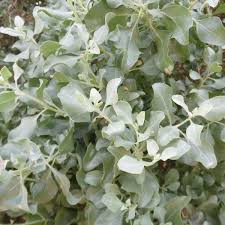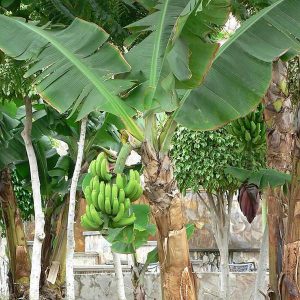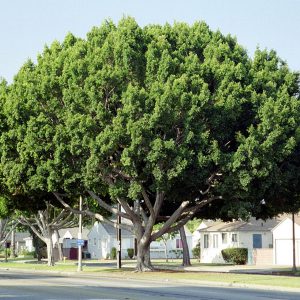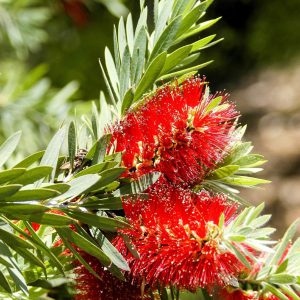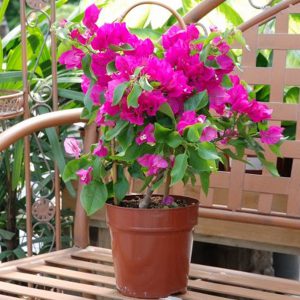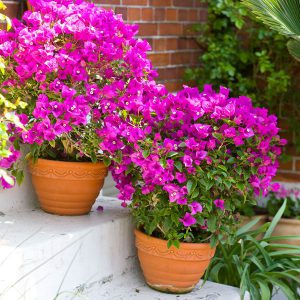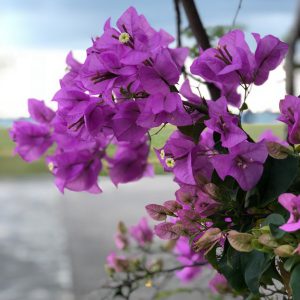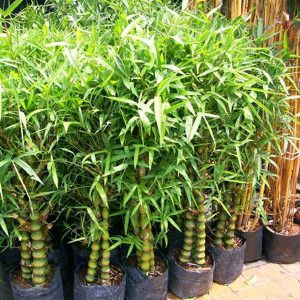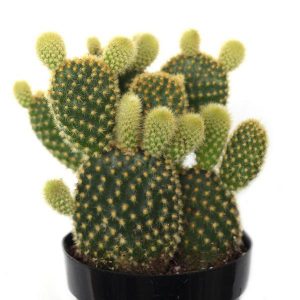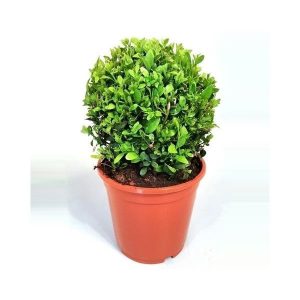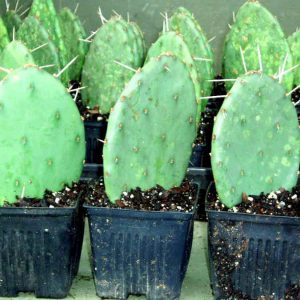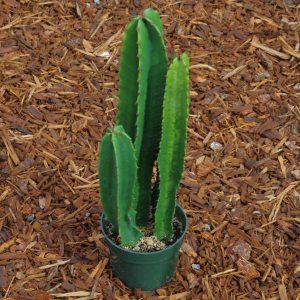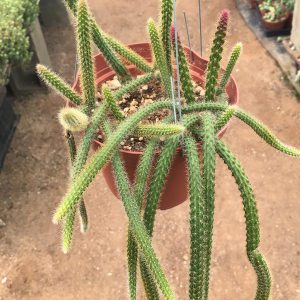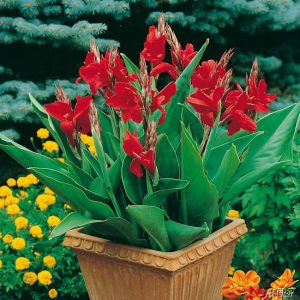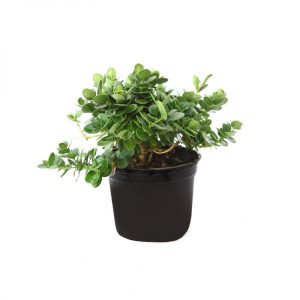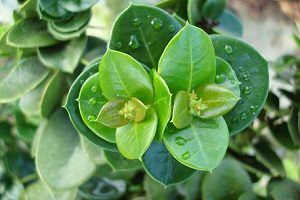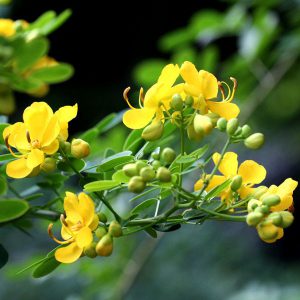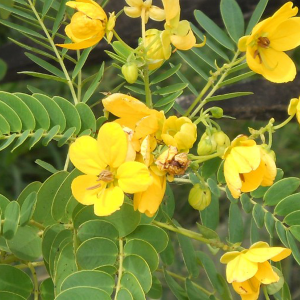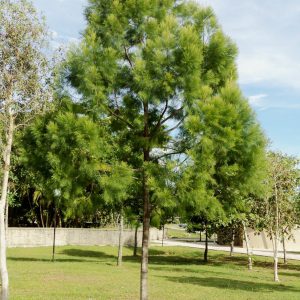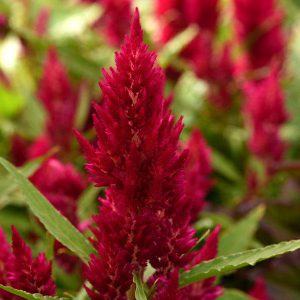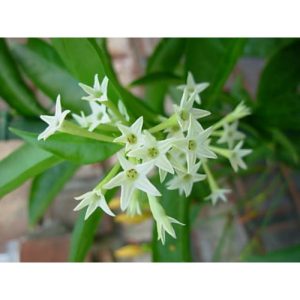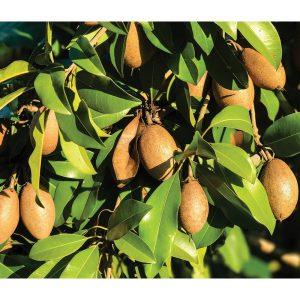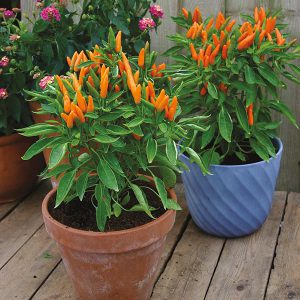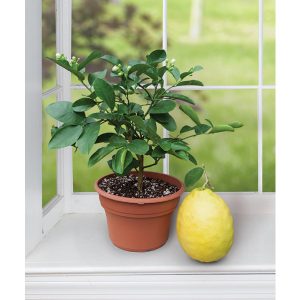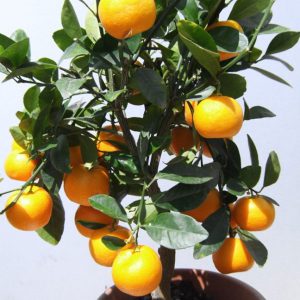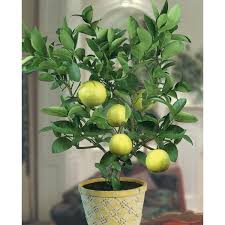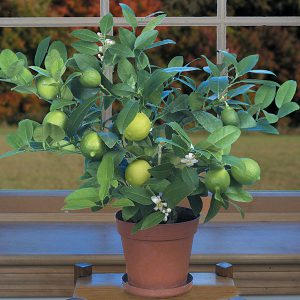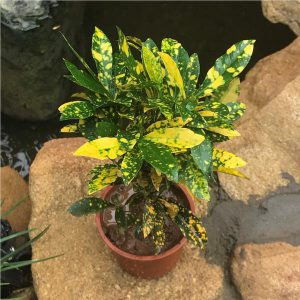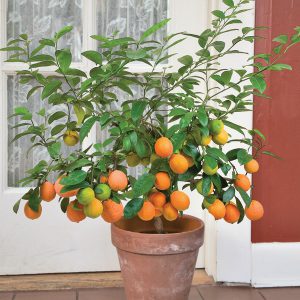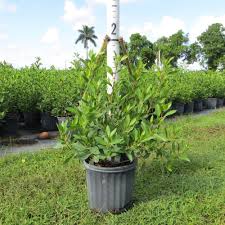Outdoor Plants
Abelmoschus Esculem
Okra is a cultigen (a plant that has been altered by humans through a process of selective breeding). The exact origin of okra is unknown, but it is thought to have come from Africa, where it has been grown as a crop for centuries. Evidence suggests it was grown in Egypt as long ago as 2,000 BC. Today it is widely cultivated for its edible green fruits, which are harvested when immature (after 3-5 days of development), and are infamous for their slimy mucilage.
AED 0.00Read more
Acacia arabica
Acacia arabica Acacia arabica is a slow growing, long lived tree usually growing 2.5-7 m tall, but occasionally reaching up to 20
AED 100.00Add to cart
African milk tree cactus
african milk tree cactus African Milk Tree (Euphorbia trigona) is a tall, rugged, easy-care plant with thorns. It should come as no
AED 50.00Read more
Agave Red Edge
Agave plants need a spot in full sun to partial shade. The hotter the climate, the more shade they can handle.
Established plants need watering once every couple of weeks if at all. Deeply water, container grown Agave plants when the top inch or two of the soil dries completely.
AED 200.00Add to cart
Agave red edge (blue glow)
Smooth, blue-green leaves with yellow-edged, red margins form a single, symmetrical rosette. Each leaf tip bears a short red spine. A comely choice for sunny, low water gardens in warm coastal or humid Mediterranean-like climates. Handsome in dry desert gardens as well, provided some shade and supplemental water. Evergreen.
AED 0.00Read more
Alamanda cathartica
alamanda cathartica Growth Form: A woody and evergreen vine. It can grow up to 6 m in height. Foliage: The leaves are borne in
AED 20.00Add to cart
Albizia lebbeck (rain tree)
The foliage is pale green when young and gray-green at maturity. Flowers are cream colored, hemispheric pom-poms. Seeds germinate well without scarification.
The tree is used as a folk remedy for many ailments. Another common use is as an avenue tree, and sometimes it is used to shade coffee and tea. Saponins and tannins in the bark can be used for making soap and in tanning, respectively. Bee keepers like the species for the light-colored honey its nectar provides, and the tree hosts the lac insect.
AED 0.00Read more
asparagus fern
Asparagus aethiopicus, Sprenger’s asparagus, is a plant native to the Cape Provinces and the Northern Provinces of South Africa. Often used as an ornamental plant, it is considered an invasive weed in many locations
AED 40.00Add to cart
asparagus setaceus
Asparagus setaceus, commonly known as common asparagus fern, lace fern, climbing asparagus, or ferny asparagus, is a climbing plant in the genus Asparagus. Despite its common name, the plant is not a true fern, but has leaves that resemble one
The fern may dry out to the point it appears dead; however, outdoor springtime temperatures generally revive them. Keep the plant well watered in all situations and repot every few years. Care ofasparagus ferns indoors involves misting the arching stems to provide humidity to the plant.
AED 28.00Add to cart
Atriplex halimus
The importance of A. halimus in the functioning of ecosystems is reflected in its promotion of soil biota, while it also acts as a food plant for mammals and arthropods. Its deep root system decreases soil erosion in arid zones, due to stabilisation of the soil. The protein-rich shoot material of A. halimus makes it an important fodder species for livestock, particularly sheep and goats. However, its low energy value means that it should be supplemented with carbohydrate-rich material, such as cereal straw. Potential new uses of this versatile plant species include the phytoremediation of soils contaminated by trace elements and the exploitation of its biomass as a source of renewable energy. Such applications, together with its continued use in low-intensity farming systems, should ensure that A. halimus remains a vital plant species in
AED 10.00Add to cart
Banana
As mentioned, banana plants grow from a corm or rhizome and produce a pseudostem made up of furled leaves and the start of the banana flower.
As the plant grows and matures, the leaves emerge and the flower blossoms transform into a berry like fruit that start out curling up toward light.
Collectively, all the fruit is called a “bunch”. As the bananas mature they begin growing downward separating into smaller groups called “hands”. Each individual banana within the hand is referred to as a “finger”.
It takes approximately nine months for banana plants to mature, grow leaves, flower and produce fruit. Once completed the parent plant dies back and baby plants (a.k.a. suckers or pups) take its place.
AED 65.00Add to cart
Banyan tree
Grow the banyan tree in an area that is large enough to accommodate its eventual size – up to 100 feet in height with a spread that may take up several acres. As a houseplant, place the banyan tree in an area with partial shade or in bright light. Choose one or the other and then don’t move it or it may end up dropping its leaves.
Water the mature outdoor banyan tree only during prolonged periods of drought. Indoors, let the soil dry out and then place the plant under the faucet, turn it on to a steady drip, and saturate the soil. Another way to ensure that the soil is evenly saturated is to place the pot in a shallow pan of water. Add more water to the pan as the soil absorbs it, until the top of the soil is wet.
AED 1,900.00Add to cart
Bottel brush (callistemon vimnalis)
Sharp-tipped leaves are the origin for the “prickly” name for this plant, and it definitely fits. Up to 2″ in length, these pointy leaves require the use of gloves to prune, but the flower stalks more than make up for the trouble.
Those flowers are actually clusters of 7-36 small flowers with extremely long stamens. The stamens are bright scarlet in color with yellowish-green tips, giving them a distinctly dual-colored look.
Visually stunning to look at, this plant can grow from five to thirty feet in height.
AED 145.00Add to cart
Bougain villea
Water a newly planted bougainvillea frequently to keep the soil moist. Once the plant is established, it blooms best if the soil is a little on the dry side. Water the plant until liquid drips through the drainage hole, then don’t water again until the potting mixture feels slightly dry. However, don’t allow the soil to become completely dry because a water-stressed plant won’t bloom. Water the plant immediately if it looks wilted.
AED 48.00Add to cart
Bougain villea pink pixie
When it comes to watering, Bougainvillea is pretty drought tolerant once established. It prefers a good, deep watering every 3-4 weeks rather than frequent shallow waterings. When establishing, be sure to give yours regular water. It’s subject to a few types of root rots so don’t over water. The soil should be well drained which will help prevent rot.
AED 55.00Add to cart
Bougain villiea spectabilis soft pink
- Good for making bonsai
- Good for Topiary
- Good for screening
- Good for Hedges and Borders
- Can grow on trellis or chain link fencing
- Attracts butterflies
- Animals will not eat
- Thorny or Spiny
- Suitable for road median planting
- Hanging or weeping growth habit
- Salt or salinity tolerant
- Good on seaside
AED 48.00Add to cart
Buddha bamboo (chines Bamboo)
Buddha’s Belly Bamboo likes sunlight. Full sunlight helps the plant grow faster.
Part shading is essential for maintaining proper health of the plant.
The Buddha’s Belly plant is not very fond of water. It never needs much water to thrive and grow.
Watering the plant once a week can be enough when growing indoors.
It is essential to let the soil get completely dry after one watering session, before watering the plant the next time.
The plant should never be allowed to sit in water. That can cause the untimely death of the plant.
AED 105.00Add to cart
Bunny ear cactus collection
Cacti are the perfect plant for the novice gardener. They are also the perfect specimen for a neglectful gardener. Bunny ears cactus plant, also called angel’s wings, has ease of care combined with an original appearance.
AED 100.00Add to cart
Buxus sempervirens
This widely used genus is prized for its evergreen foliage and its ability to withstand heavy pruning. The yellow-green flowers are insignificant. Buxus has been used in hedging, topiaries, and parterres for centuries.
Noteworthy CharacteristicsOpposite, glossy rounded to lance-shaped leathery leaves. Variegated forms exist.
CareGrow in any soil, preferably in part shade. Tolerates full sun if the soil is moist. Prune in late spring and summer; supply fertilizer after any heavy pruning to aid in regeneration.
PropagationRoot semi-ripe cutttings in summer. Graft in winter.
AED 370.00Add to cart
cactus ears
This classic cactus has large, flat, dusty green paddles with lots of sharp thorns. The thorns are evenly distributed across the pads and also form an areola at the tip of each pad.
In addition to stationary thorns, the prickly pear also produces loose thorns called “glochids”. These thorns are barbed and can fasten onto skin and clothing.
With all of these thorns, it’s a bit hard to understand why the Opuntia is such a popular ornamental cactus until you see the blossoms, which grow from the areola of thorns.
AED 60.00Add to cart
Cactus Ingens
A potted cactus will live and flower in the house if given enough light, place the plant near a bright lighted window, where it will receive light most of the day. On the patio is different place the cactus in a partly shaded area until it become accustom to the sun. Never bring the cactus home and place it in the bright sun, cactus sun burn just like people
AED 105.00Read more
Cactus tail (Rat tail cactus)
Rodents may not be your thing but the easy-to-grow rat tail cactus could be. Aporocactus rat tail cactus is an epiphytic plant, which means it grows naturally in low soil cracks such as tree crotches and rocky crevasses. The plants are native to Mexico which means for the most part growing rat tail cactus is an indoor activity. Gardeners only in the warmer zones can grow them outdoors, but rat tail cactus houseplants thrive in the interior landscape. Rat tail cactus care is uncomplicated and the plants add interest and texture to hanging baskets or succulent containers.
AED 0.00Read more
canna lily (canna indica purpurea)
- Cannas do best with a good supply of water, so water the plants during the summer if the rainfall is less than 1 inch per week. …
- Keep a thin layer of mulch around cannas to help retain moisture as well.
- Stake tall varieties if needed.
- As flowers fade, deadhead to promote continued flowering.
AED 25.00Add to cart
caribbean trumpet tree (tabebuia argenitna)
The Tree of Gold is one of the most spectacular of flowering trees, especially when grouped. Flowering is brief, intense and is usually started and completed by all trees in close unison. It is planted as an ornamental and persistent tree. It is good for planting along avenues and in parks and home gardens.
This species grows well in a wide variety of soils and requires little maintenance
AED 450.00Add to cart
carissa gandiflora boxwood beauty
Carissa ‘Boxwood Beauty’ is a compact dense evergreen shrub with green foliage and no thorns on the stems. Has deep green leaves like a large leafed boxwood. OK to prune heavily to shape. Produces fragrant white flowers with 5 petals. Full sun produces best growth results. Excellent for hedging and shaping
AED 10.00Add to cart
Cassia fistula (Golden shower tree)
Young trees can grow asymmetrical with branches often drooping toward the ground. Staking and proper pruning will help develop a well shaped and structured crown.
It has great value in medicine. It is known as aragvadha, meaning “disease killer”. The root is considered a purgative, and self-medication or any use without medical supervision is strongly advised against in Ayurvedic texts. The flesh of the fruit is used as a laxative, while the bark can be used to treat skin infections.
AED 10.00Add to cart
Cassia surattensis
| Plant Morphology : Growth Form: Large-sized shrub or small tree, able to grow up to 7 m tall. Foliage: Even-pinnate green leaves with 6 – 9 pairs of leaflets, alternate, petioles measuring about 1.5 – 3 cm long, leaf measuring about 18 cm long, leaflets in pairs and usually obovate to oblong, measuring about 2.5 – 4 cm long and 1 – 1.7 cm wide, upper surface glabrous and lower surface slightly pubescent. Flowers: 10 to 15 yellow flowers in a raceme from the upper leaf axils, measuring about 3 – 6 cm long, peduncle measuring about 2.5 – 5 cm long. Fruits: Fruit is a flat pod, glabrous with papery valves, measuring about 7 – 10 cm long and 1 – 1.5 cm wide, contains about 15 – 25 seeds, glossy flattened and each seed measuring about 8 mm long and 4 mm wide. |
| Etymology : Genus Senna is derived from the Arabic name “sana”, which refers to the laxative leaves and pods. Species surattensis means from Surat, Southeast Gujarat state, India. |
| Ethnobotanical Uses : Food (Herb & Spice) Medicinal (Leaves used as laxative to treat constipation.) |
| casuarina sumatrana (rhu bukit) |
AED 90.00Add to cart
Casuarina sumatrana (rhu bukit)
Casuarina (Casuarina equisetifolia) belongs to family Casuarinaceae is the most popular farm forestry tree in the coastal lands of Andhra pradesh, Orissa, Tamilnadu, West Bengal, Maharashtra, Gujarat & Karnataka. Casuarina resembles feathery conifer in general appearance. Almost all of the approximately 35 casuarina species produce top-quality firewood. They are rapid-growing, carefree species for sites and climates as varied as coastal sand dunes, high mountain slopes, the hot humid tropics and semi-arid regions. They tend to be salt tolerant, wind resistant and adaptable to moderately poor soils. Although they are not legumes, they do have the ability to form root nodules and fix atmospheric nitrogen.Casuarina equisetifolia can attain heights of 50 m with diameter of around 1 metre. However, it is generally only 15 – 25 metre tall.
AED 0.00Read more
Celosia
Sunlight: Full sun locations allow cockscomb Celosia to grow taller. But cockscomb may grow in only partial sun, so it can happily exist when partially shaded by taller plants.
Water: Celosia loves moist soil. Although the plant can tolerate short periods of drought but it grows much better when soil remains slightly moist. While watering, remember not to overwater plant to avoid leaf spots, stem rot, root rot and other fungal diseases.
AED 3.00Add to cart
cestrum nocturnum (night blooming jasmine)
- Water your plants freely during spring and summer, reducing the volume of water required in winter. Plants that are placed in containers require a monthly high potassium feed (such as a tomato fertiliser) as this will provide additional nutritional value. Summer jasmine are best pruned after they flower during late summer or early autumn. Hardy perennial.
AED 75.00Add to cart
Chickoo plant in pot
Chickoo has brown fuzzy skin and is more oval-shaped than its Central American cousins, though some develop pointed ends. The skin is inedible, but serves a purpose as a kind of bowl for the sweet flesh. The flesh is off-white to a yellowish brown color and has a soft and juicy texture. The sweet flavor of the Chikoo flesh is due to the presence of high levels of fructose and sucrose. Its texture and flavor has been compared to that of pear. Within the flesh of the Chickoo is a cavity with two to three large black seeds. The seeds are inedible and should be discarded.
AED 95.00Add to cart
Chilli Pepper
Colorful, compact plants that grow to heights and widths of about 12 inches, ornamental chili peppers (Capsicum annuum), produce masses of small, upright peppers that start out green, eventually turning chartreuse, orange, and finally rich, bright red. A single plant often produces more than 50 chili peppers at a time. Although ornamental chili peppers are tropical plants most often grown indoors
AED 30.00Add to cart
Citrus Lemon
The lemon is a small tree (Citrus limon) that is green even in the winter. It came from Asia, and is also the name of the tree’s oval-shaped yellow fruit. The fruit is used for cooking and other things in the world – usually for its juice
AED 130.00Add to cart
Citrus Mitis
Citrus mitis is an indoor orange tree very well suited to living inside our heated homes.
Citrus mitis, also called calamondin, is a small fruit shrub that produces edible fruits, but they’re so acidic that they’re hard to digest.
Indoors, simply set your citrus mitis in a well-lit spot but avoid direct sunlight during the hottest hours.
Also avoid setting it right near a radiator.
If you can, it is good to bring your Citrus mitis outdoors after any risk of freezing has disappeared, from spring until the end of summer, either on a balcony, terrace, or garden deck.
AED 260.00Add to cart
Citurs aurantifolia
Seedlings are largely true to type because of polyembryony. The juvenile phase lasts about 5 years. Root suckers and suckers on older branches, characterized by stout sharp spines, are common. Lime is an everbearing tree. Flowers are either perfect or male and borne in inflorescences of up to 10 flowers in the leaf axils of mature shoots, but are often single in the axils of a shoot which has just flushed. The stigma is receptive as the flower opens and remains so for a few days. Pollen is not released until the flower has opened. Copious secretion of nectar by a floral disk attracts insects, especially honey bees, which pollinate the flowers. Self-pollination occurs, but self-incompatibility limits fruit set.
Fruit requires 5.5-6 months from flowering to harvest. In Thailand there is little fruit in March-April. This may be due to early ripening (colouring) of the fruit during the cool dry period of December-February. Alternatively, the gap in supplies may be caused by poor flowering or fruit set during September-October (the second half of the rainy season).
AED 0.00Read more
Citurs clementine
Clementines (Citrus reticulata “Clementine”) are beautiful lush green trees that produce juicy citrus fruit in mid to late fall. They grow well outdoors in U.S. Department of Agriculture plant hardiness zones 9 through 11, but also can be potted and grown indoors elsewhere. If you live where it doesn’t get below 40 degrees Fahrenheit, care for the clementine tree in a pot until it grows to 3 feet tall, then transplant it outside.
AED 250.00Read more
Codiaeum Variegated Gold dust
Like most houseplants, they also appreciate abundant humidity. You can boost humidity for your croton by growing it in a well-lit kitchen or bathroom, placing a small humidifier nearby, or grouping it nearby other houseplants.
Fertilize croton in spring and summer to keep it healthy and growing. Crotons only need fertilizer once or twice during the season, but you can get them to grow faster by fertilizing more frequently. Follow the directions on the fertilizer package whenever feeding your plants.
AED 95.00Add to cart
Combacta (carissa grandiiflora) natal plum
Moderate growing evergreen shrub with a rounded growth-habit to 5-8’ tall and wide or larger with age. This durable dense upright-growing species features glossy deep emerald-green foliage accented with an abundance of showy sweetly-fragrant star-shaped pure white flowers that appear predominantly in spring with sporadic bloom throughout the year in milder climates. Following flowering appear 1-2” oval-shaped fruit that ripen to bright-red in summer. This fruit is edible and is popular for jellies and jams as well as being a food source for various bird species. Flowers and fruit are often seen at the same time. This species is armed with rigid forked thorns and makes a formidable barrier. Well-suited as a large background or screen and takes well to shearing making it a good clipped hedge. Tolerates coastal conditions and a variety of soil types provided they’re fast-draining. Drought tolerant once established though a more robust-looking plant will be achieved with regular watering. Full to partial sun.
AED 0.00Read more
conocarpus (damas)
There are many reasons why this is one of the most widely planted landscape trees and shrubs in the UAE. Fast-growing and tolerant of heat, drought and salt, it makes an excellent large landscape tree, or a screen or windbreak when planted as a hedge.
Often used as a pioneer species in soil stabilisation or reforestation projects, Damas has also proved effective in cleaning oil-contaminated soils and in absorbing heavy metals and minerals through its extensive, fibrous root system. Not only is Damas’s dense wood suitable for charcoal and young foliage for fodder, but it also has the appearance of a water-hungry exotic species. In fact, it is native to Somalia, East Africa and the Arabian Peninsula and requires relatively little irrigation.
AED 25.00Add to cart

